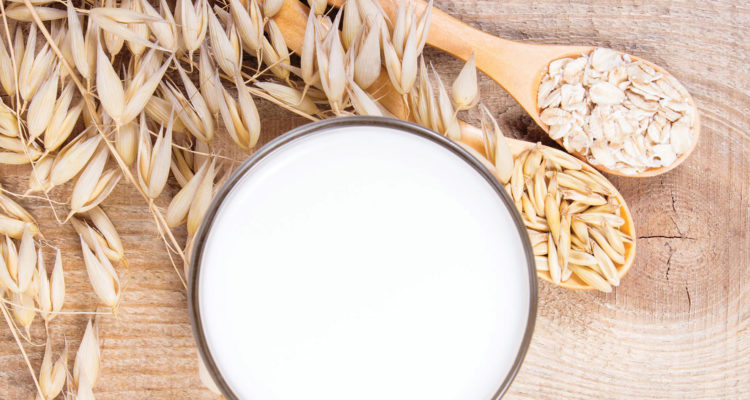But What Exactly Is It?
Story by Cheri Woodsmall
Recently, while visiting a favorite coffee shop with a friend, she ordered an Oat Milk Latte. Though I had heard rumblings around social media of this odd drink of choice, it was the first time I had KNOWN anyone who drank it. And enjoyed it. Vegan lovers rejoice!
There is a new kid on the block that’s getting a lot of attention from nutritionists and foodies alike: oat milk.
So, What is it Exactly?
Oat Milk consists of steel-cut oats or whole groats that are soaked in water, blended, and then strained with a cheesecloth or a special nut milk bag. While the leftover oat pulp has the bulk of the fiber and most of the protein in the oats, the liquid or ‘milk’ that results does have some of the nutrients in oats. Because oats absorb water more easily than nuts, when blended well enough, more of the food itself winds up passing through the cheesecloth, giving a creamier texture than nut milk without added ingredients.
Oats are an incredibly nutritious cereal grain, and oat milk can be a healthy plant-based milk choice. It all depends on the brand and variety, so you’ll have to read ingredient lists carefully.
Like all plant-based “milks,” some contain too much added sugar or other unhealthy additives, and it’s also currently hard to find an organic version.
But woah: oat milk is SO trendy right now. In fact, it’s in such high demand that companies can’t keep up with production, and oat milk shortages occur all the time. In other words, it’s worth getting the facts about the of-the-moment dairy alternative, now.
HERE’S WHAT YOU NEED TO KNOW…
Oat Milk Nutrition
First, the nutrients you want: In general, oat milk usually contains three to four grams of protein per serving. That’s a lot less than soy milk but significantly more than almond. While oats are high in fiber, it loses some when it’s processed into milk, so you end up with about two grams, which is pretty much equal to what you’d get in soy or almond. You’ll almost always get a small dose of important minerals like calcium and iron, and some brands, like crowd-favorite Oatly, also fortify the beverage with vitamins like D and A.
In terms of things on the nutrition label you need to look out for, sugar is key. And then the ingredient list: Most popular brands are clean, with oats and water as the main ingredients and then sometimes salt and added vitamins and minerals. Oatly adds a tiny bit of rapeseed oil to its milk, but it’s less than two percent.
Finally, most of the popular brands — except for Pacific — don’t use organic oats, which is a bummer. If you’re gluten-free, you should also look for the term on the packaging. Oats are naturally gluten-free but are often processed in facilities that lead to cross contamination.
Oat Milk Flavor and Benefits
Here’s the thing: The reason everyone started going totally crazy for oat milk has nothing to do with nutrition facts. It’s just delicious.
If you’re a vegan or just someone who’s trying to cut back on dairy, but you love a frothy, creamy latte, oat milk has a consistency like cow’s milk that beats out all of the other plant-based competitors — from soy and almond to hemp and rice. Not only is it oh-so-creamy, it has a naturally sweet flavor that also is just a little milkier than the others.
Another bonus: If you normally opt for almond milk, oat might be slightly better for the planet, since oats are a much more efficient crop that can be grown with way less water than almonds.
The Bottom Line
Can oat milk be part of a healthy diet? Sure, if you do your homework, and especially if you’re just adding a touch to your coffee here and there. (You shouldn’t be chugging it alongside every meal; water is best for that!) Choose a brand with a simple ingredient list and check the sugar content. Avoid flavored versions (like chocolate and vanilla) to steer clear of added sugar. Try to buy organic if it’s available. And then enjoy that creamy, frothy vegan cappuccino.






